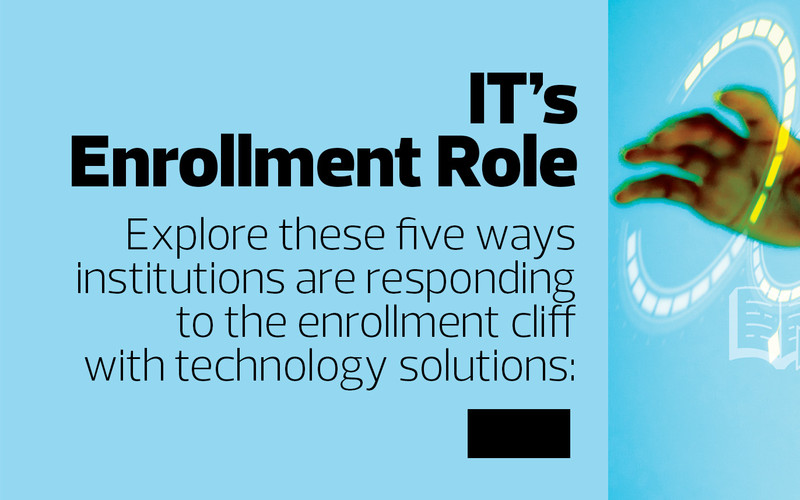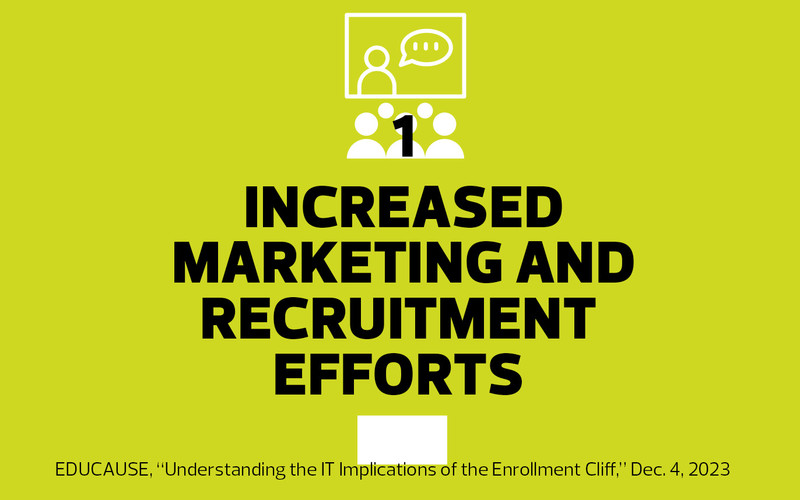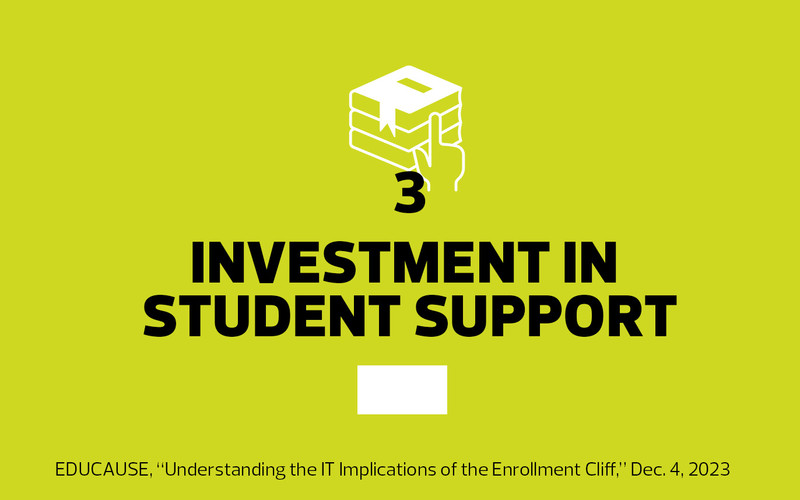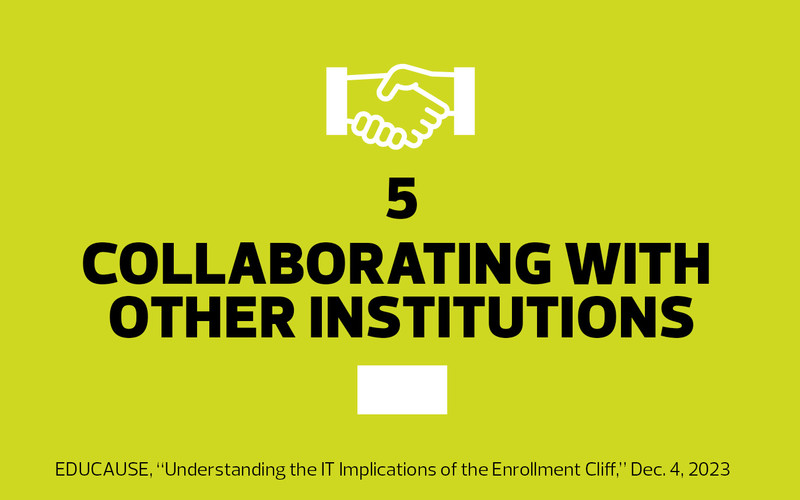With funding on the line, FIU invested in a suite of analytics software, including Tableau, and held a range of training sessions to educate new users about how to benefit from the data newly at their disposal. The result was a 10 percent increase in the university’s four-year graduation rates.
“We can slice data in ways that help us determine which interventions are needed based on risk factors for individual student groups,” Perez says. “The students have benefited from having staff who can use real-time data to identify students’ challenges and devise timely interventions.”
The experience makes FIU a leader among a growing number of institutions that are seeking to leverage student lifecycle management technology to drive academic performance and retention as one way to limit the impact of the so-called enrollment cliff.
Colleges Seek Protection from the Enrollment Cliff
Projected to occur around 2025 or 2026, the enrollment cliff refers to an anticipated significant decline in higher education enrollment across the U.S., brought on by myriad factors, including decreasing birth rates, high tuition costs and an evolving job market.
As colleges and universities near the edge of the cliff, they are determined to build guardrails.
Bringing in new students, however, is only part of the solution. New students do little to help an institution’s long-term financial state unless they return every semester. That’s why institutions like FIU and Jacksonville University in Northeast Florida are increasingly focused on student retention, hoping to catch at-risk students before they fall through the academic cracks.
“We’re fortunate to have started talking about the enrollment cliff a long time ago,” says Robert Berwick, JU’s assistant vice president and registrar. “Today, as we look at enrollment or admissions data, one of the things we’re delving deeper into is where we see weaknesses. If we had 13,000 high school students interested last year, and this year we only have 11,000, where did those 2,000 students go?”
By the 2010s, JU’s student retention rate had plateaued to just under 70 percent, says Will Miller, who was the university’s executive director of institutional analytics, effectiveness and strategic planning at the time. JU’s president was determined to push that number higher.


















